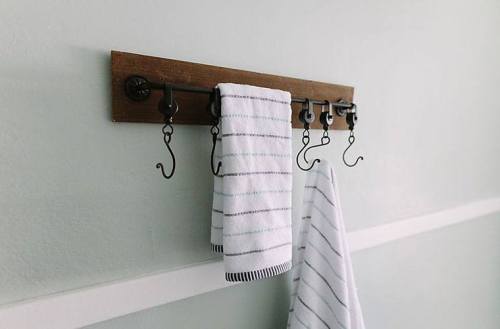Your germaphobic heart undoubtedly skips a beat at the thought of subway poles, port-a-potties at 5K races, and airplane blankets. Some of the grodiest culprits, however, are found right in your own apartment. Turns out: Fecal bacteria pops up in the damndest places.
The good news is that you can vanquish it—and countless other microorganisms that have invaded—with just a few minutes of tidying a day. Kelly Reynolds, an environmental biologist at the University of Arizona’s Zuckerman College of Public Health, shares the filthy scoop on where to look.
Keep scrolling to find out the germiest places in your home and how to get them to come clean.

1. Reusable grocery bags
Researchers at the University of Arizona and Loma Linda University discovered that 97 percent of surveyed shoppers do not wash their bags regularly, if ever. (Three-quarters also said they don’t use separate bags for meat and veggies.) The researchers, perhaps unsurprisingly, found most of the bags were rife with potentially harmful bacteria, including E. coli.
The solution: Designate certain bags “grocery only,” and mark one for meat, one for produce, and so forth to avoid cross-contamination. Toss your meat and produce bags in the washing machine after every use, Reynolds says. Totes used for boxed goods and non-perishables can go a bit longer.
2. Liquid soap dispensers
“People touch the soap pump when their hands are still dirty,” Reynolds says. Because most people rarely clean their soap pumps, bacteria proliferates as soap scum builds up—and continuous contact with filthy paws keeps the cycle going. In the bathroom, that means, yep, fecal bacteria is likely on your soap dispenser. Your kitchen bottle, meanwhile, may harbor all sorts of grossness if you handled raw chicken and then tapped the pump.
The solution: Wipe down your dispensers with an antimicrobial cleanser every time you clean your bathroom or kitchen. (Yes, EVERY time—it takes 30 seconds!)
3. Your coffee maker
You ditched your to-go coffee habit—congrats! But now there’s something you gotta do about that at-home machine. Its dark, damp reservoir is basically heaven for microorganisms, according to Reynolds. One in two coffee makers harbor yeast and mold, per a National Science Foundation study.
The solution: The basic cleaning technique outlined in most machines’ instruction manuals will do the trick: Add equal parts white vinegar and water to the reservoir, let it sit for half an hour, and then brew it. Follow with several cycles of water until the vinegar smell has dissipated.

4. Your bath towel
Reynolds found MRSA—the potentially dangerous, antibiotic-resistant staph bacteria—on nearly one in five of the towels she tested in people’s homes.
The solution: While some purists say you should wash your towel after every shower, Reynolds is willing to give you up to three uses, provided you hang it up to dry immediately. (That means allowing it ample room on its own rack or hook—no layering or scrunching together multiple towels.) And don’t even think about re-using a wash cloth: “It’s so wet that the drying time is lengthy enough to allow for unacceptable bacteria and mold growth,” she says.
5. The washing machine
Real talk here: Reynolds and her colleagues found that the average person’s underwear contains about a tenth of a gram of fecal matter, regardless of hygiene. And the germs on one pair of underwear will spread to 90 percent of the other clothing in the load—even in hot water. “Most bacteria that cause colds, flus, and other illnesses will survive the wash cycle, no matter the water temperature,” Reynolds says.
The solution: The dryer is your best friend. Reynolds recommends drying every load for at least 28 minutes on the highest heat setting to kill viruses. Skip the low- or no-heat settings, and hang delicate items to dry outside: Ultraviolet light is a disinfectant.
6. Kitchen sink
No rest for the weary (or grossed out): This final spot may be the worst germ-monger yet. “Your kitchen sink probably has more fecal bacteria than a toilet bowl,” Reynolds warns. Because it’s frequently wet, bacteria from rinsed produce and uncooked meats—think salmonella, E.coli and campylobacter—can grow quickly.
The solution: Vinegar can kill some of the bacteria, but you’ll need to pull out the big guns (such as disinfectants, twice a week) to really annihilate the problem. Make sure to pour some of the solution down the drain—trapped food makes it a breeding ground, too.
Originally published December 26, 2017; updated July 4, 2018.
Tidying up doesn’t have to feel like a chore: This is the Japanese de-cluttering method that will still keep your home cozy and these towels basically clean themselves.
Sign Up for Our Daily Newsletter
Get all the latest in wellness, trends, food, fitness, beauty, and more delivered right to your inbox.
Got it, you've been added to our email list.










